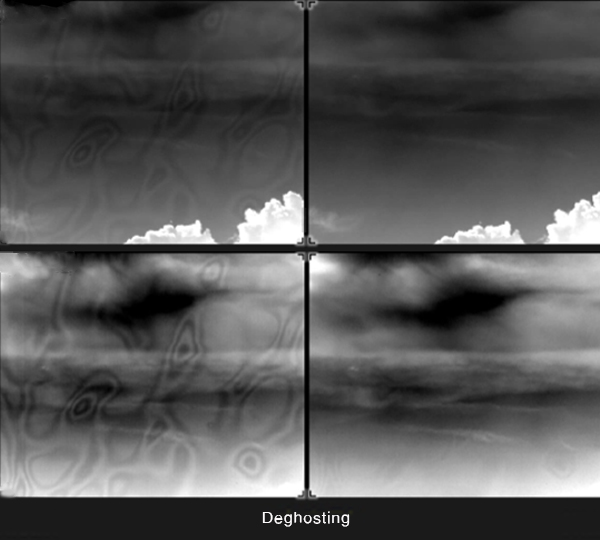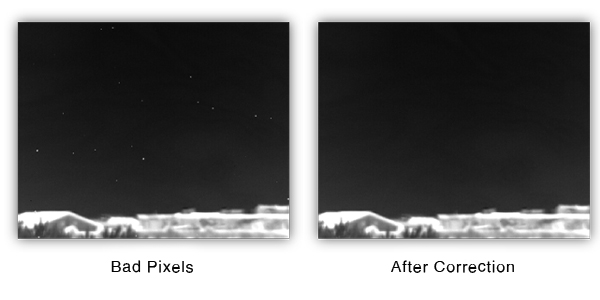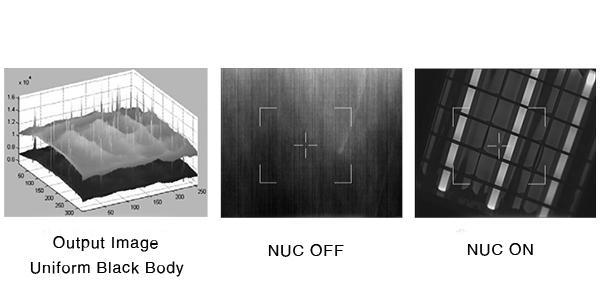1、Infrared·Ghost Effect
Ghost effect refers to bright or dark lines that appear in the infrared thermal image and do not change with the target. It is caused by the inhomogeneous response rate of thermal imaging detector to the infrared radiation.
It can be solved by making two-point calibration on site. In general on-site calibration, you can aim at a low-temperature target (such as the cloudless sky) and press the specified compensation key, then aim at a relatively high-temperature target (you can choose to close the lens cover), and press another compensation key. After the compensation is completed, the system will automatically calculate the correction coefficient K value according to the compensation collected to perform two-point correction so that ghost images can be eliminated.

2、Infrared·Bad Pixels
Bad pixel refers to the bright and dark spots in the infrared image, and their coordinates do not change with the target. It is caused by the high or low response rate of a single detection element of the infrared detector to infrared radiation, which is also called invalid pixel, including overheated pixel and dead pixel. A pixel whose noise voltage is 10 times greater than the average noise voltage is called an overheated pixel (white dots), and the pixel response rate is lower than the average response rate 1/10 of the pixels are called dead pixels (black dots). During the actual use of thermal imagers, the dead pixels can be corrected by setting the dead pixel threshold.

3、Infrared·Non-uniform Correction (NUC)
Due to the limitation of manufacturing process of the thermal imaging sensor, each pixel of the thermal detector has different response rate to infrared radiation, and the above ghost effect and bad pixel phenomenon will appear in the thermal image, affecting the imaging quality of infrared cameras.
Non-uniformity correction (NUC) is a technical means to effectively reduce the non-uniformity of infrared detector's response rate (i.e. the detector's inherent spatial noise) and improve the imaging quality of thermal imaging cameras. After the non-uniformity correction, the image quality of infrared thermal camera is uniform. The ghost effect and bad pixels disappear, and the imaging effect is significantly improved, which can greatly improve the observation ability of thermal imagers.

Go Top